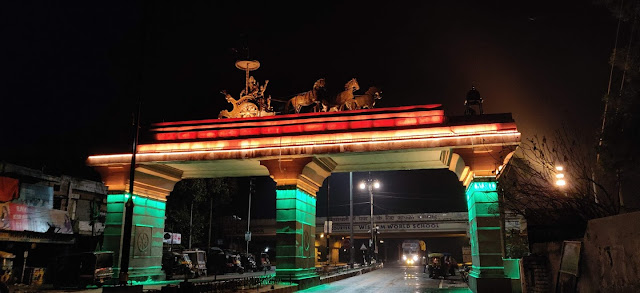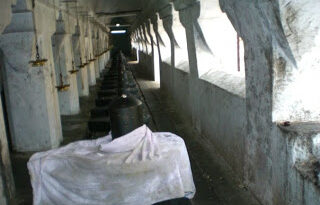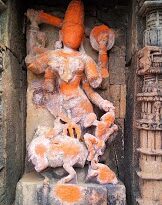Kurukshetra: The land of virtue
The holy land of Kurukshetra finds mention within the Mahabharata narrative as the battlefield of the famous Kurukshetra war between the armies of the Pandavas and Kauravas. Located between two rivers Saraswati and Drishadwati, the land is named after King Kuru, the ancestors of the Pandavas and Kauravas.
Also referred to as Dharmakshetra or ‘the land of virtue’, it holds high esteem as being a place where dharma reigns supreme. King Dhritarashtra refers to Kurukshetra as ‘Dharmakshetra’ in the very first verse of the Bhagavad Gita:
धर्मक्षेत्रे कुरुक्षेत्रे समवेता युयुत्सवः |
मामकाः पाण्डवाश्चैव किमकुर्वत सञ्जय ||
O Sanjaya, after gathering on the holy field of Kurukshetra to fight, what did my sons and the sons of Pandu do?
The Vamana Purana states that in the days of yore, King Kuru chose the land adjacent to the Saraswati river to embed the eight virtues of spirituality: austerity (Tapas), truth (Satya), forgiveness (Kshama), kindness (Daya), purity (Shuddha), charity (Daana), devotion (Yajna), and conduct (Brahmacharya). Being pleased with his endeavor in this regard, Mahavishnu blessed that the land will forever be known as a Holy land and dubbed it as Kurukshetra, The land of Kuru and further decreed that anyone dying in this holy land will go to heaven.
It comes as no surprise that this sacred land embedded with the eight virtues/dharma was chosen to be the battlefield of the Pandavas and Kauravas, which symbolically represents the battle between dharma and adharma and quite fitting that the divine discourse of the Bhagavad Gita, in which the lord seeks to remind Arjuna of his Kshatriya dharma also takes place in the aptly named Dharmakshetra.
Located in modern day Haryana, in the entrance to the town of Kurukshetra, one is greeted by a sculpture of Lord Krishna driving the chariot of Arjuna, a classic depiction of the Kurukshetra war and of the Bhagavad Gita.

Kurukshetra and the nearby town of Thanesar taken together, forms an important pilgrimage site with many significant locations attributed to the Mahabharata. Some of the major pilgrimage sites in and around Kurukshetra and Thanesar are:-
Brahma Sarovar: Every year lakhs of people come to take a holy bath at the Brahma Sarovar on the occasion of ‘Somavati Amavasya’ (Sacred No-Moon Day that happens on a Monday) and on solar eclipses. They believe that a bath in the holy Sarovar frees all sins and cycle of birth-death. It is one of Asia’s largest man-made ponds.
Sannihit Sarovar: The pond is believed to be the meeting point of the seven sacred Saraswatis. The Sarovar, according to popular belief, contains sacred water and it is believed that bathing in the waters of the tank on the day of Amavasya (new moon) or on the day of an eclipse bestows blessings equivalent to performing the Ashvamedha Yajna.
Sthaneshwar Mahadev temple:A temple dedicated to Lord Shiva, it is believed that here the Pandavas and Lord Krishna worshipped Lord Shiva to get His blessings for victory in the Kurukshetra war.
Jyotisar: The famous site where the Bhagavad Gita was expounded to Arjuna under the holy banyan tree.
Bhishmakund:The spot where Arjuna pierced the ground to bring forth a spring of water to quench Bhishma’s thirst as he was lying on the bed of arrows.
As the famous saying in sanskrit goes:
धर्मो रक्षति रक्षितः
Those who protect dharma, are protected by dharma.
Thus the sacred land of Kurukshetra, a personification of dharma in and of itself will indeed protect all those who visit the holy land and instill faith, devotion and righteousness in every devotee’s heart.
Location: Kurukshetra, Haryana, India



